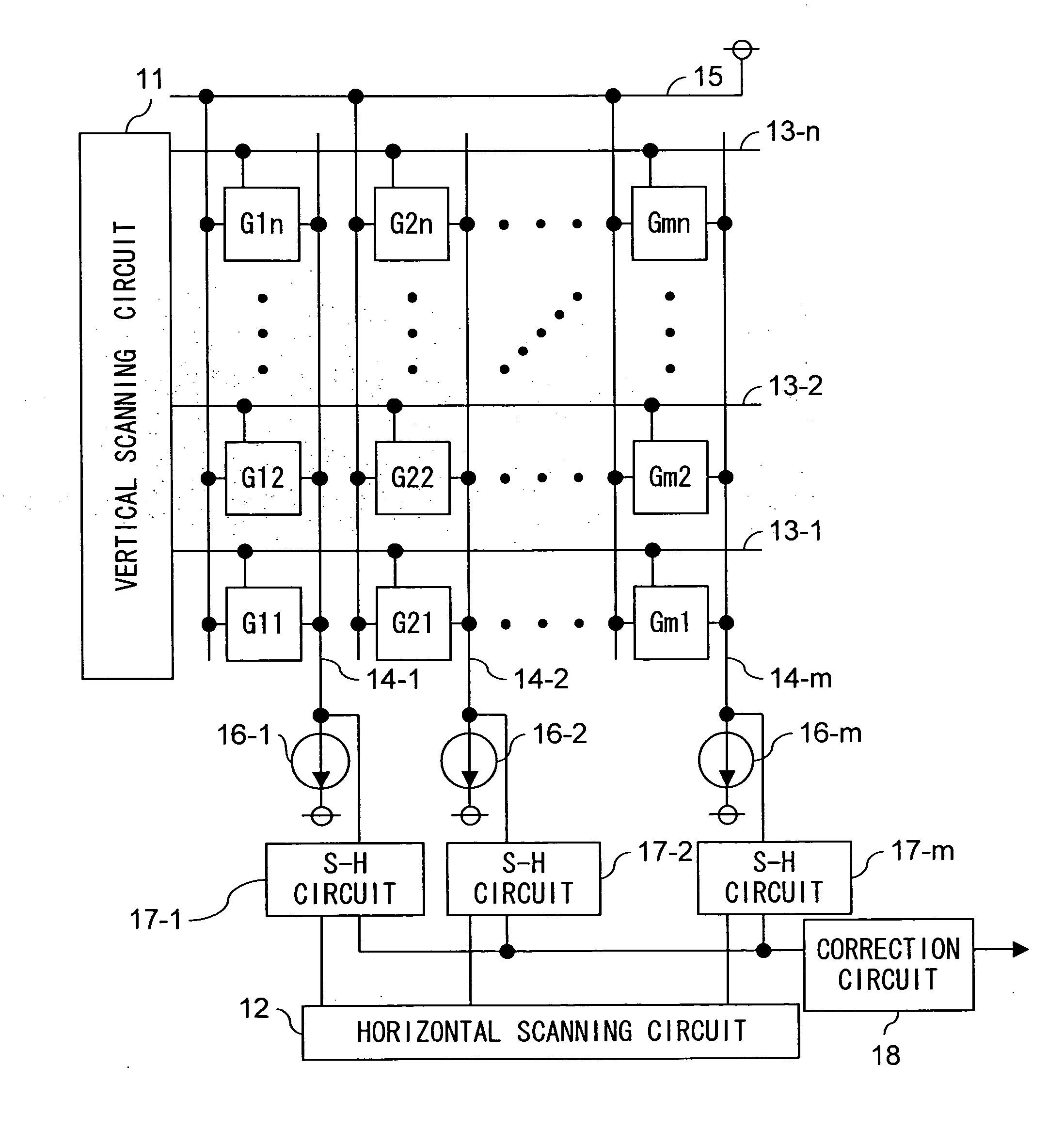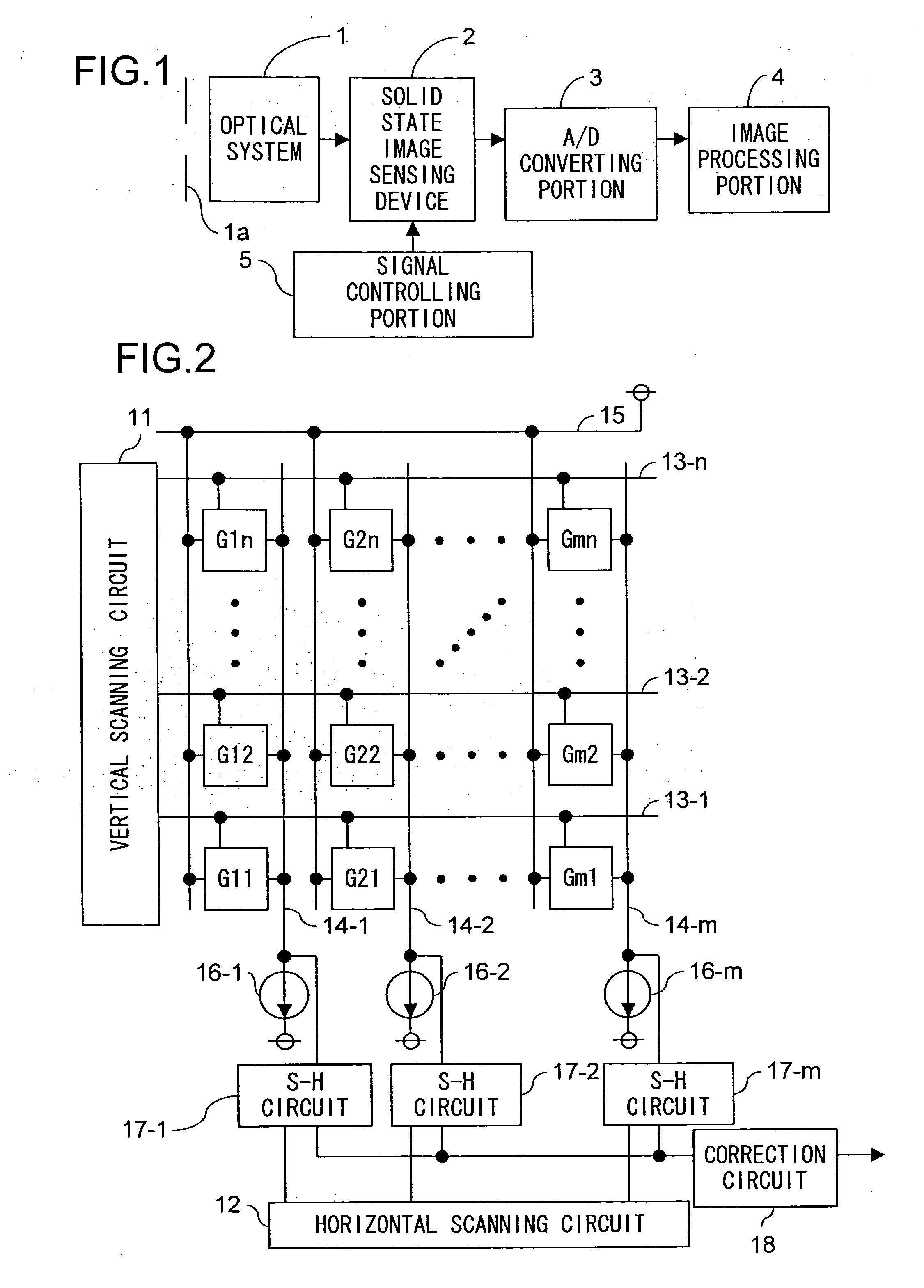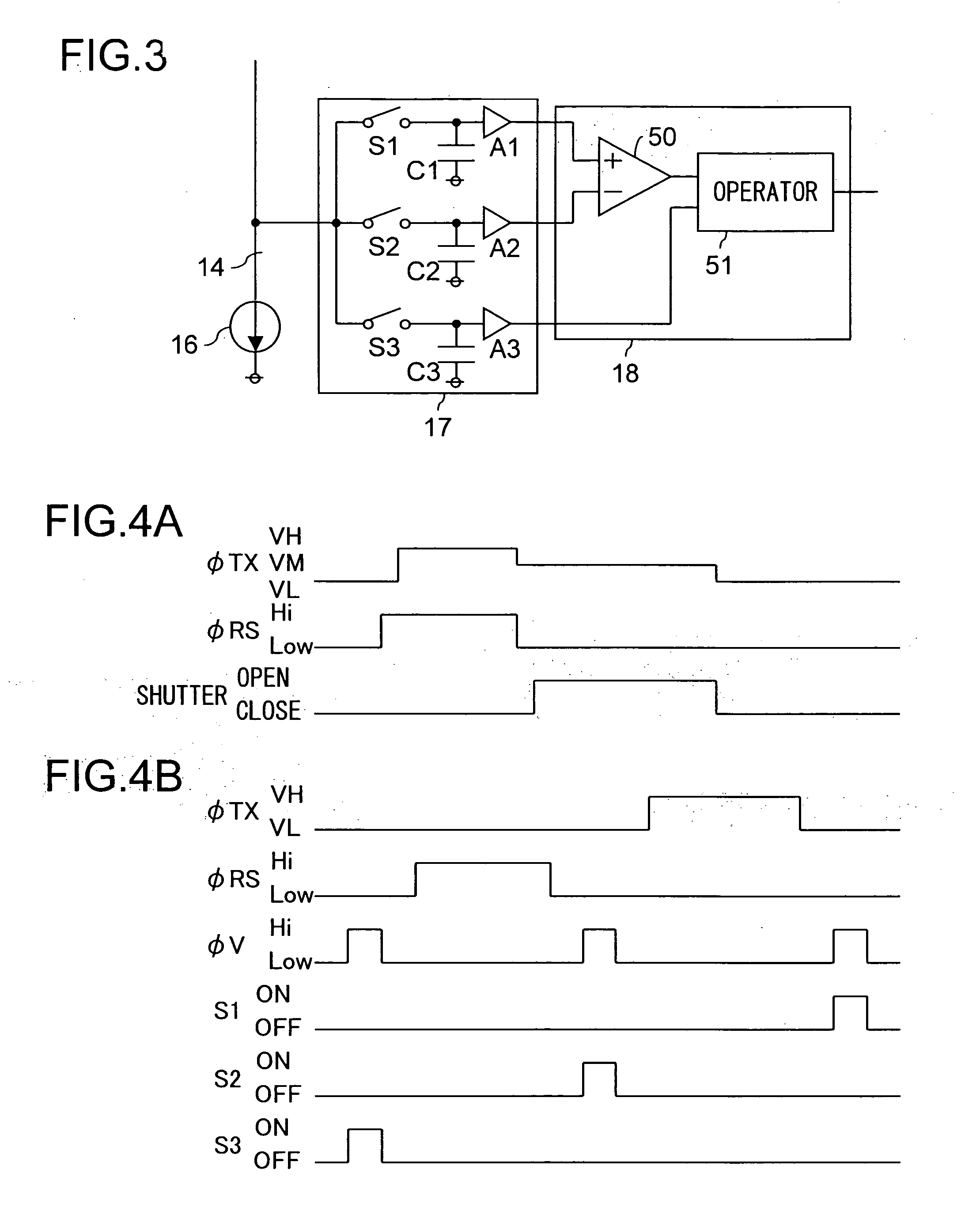Solid-state image-sensing device
a solid-state image and image-sensing technology, applied in the scanning details of television systems, color television, television systems, etc., can solve the problems of increasing the size of each pixel, narrow dynamic range, and inability to acquire accurate information on subjects, etc., and achieve the effect of low aperture ratio
- Summary
- Abstract
- Description
- Claims
- Application Information
AI Technical Summary
Benefits of technology
Problems solved by technology
Method used
Image
Examples
Embodiment Construction
[0031] Hereinafter, embodiments of the present invention will be described below with reference to the drawings.
Configuration of an Image-Sensing Device
[0032] As shown in FIG. 1, an image-sensing device embodying the preset invention is provided with: an optical system 1 that is composed of a plurality of lenses; a mechanical shutter 1a that controls the exposure duration of the optical system 1; a solid-state image-sensing device 2 that converts the amount of light incident thereon through the optical system 1 into an electrical signal and outputs it as an image signal; an A / D converter 3 that converts the image signal outputted from the solid-state image-sensing device 2 into a digital signal; an image processor 4 that performs various kinds of image processing on the image signal thus converted into a digital signal by the A / D converter 3; and a signal controller 5 that controls the voltage levels of individual signals in the solid-state image-sensing device 2.
[0033] In the i...
PUM
 Login to View More
Login to View More Abstract
Description
Claims
Application Information
 Login to View More
Login to View More - R&D
- Intellectual Property
- Life Sciences
- Materials
- Tech Scout
- Unparalleled Data Quality
- Higher Quality Content
- 60% Fewer Hallucinations
Browse by: Latest US Patents, China's latest patents, Technical Efficacy Thesaurus, Application Domain, Technology Topic, Popular Technical Reports.
© 2025 PatSnap. All rights reserved.Legal|Privacy policy|Modern Slavery Act Transparency Statement|Sitemap|About US| Contact US: help@patsnap.com



